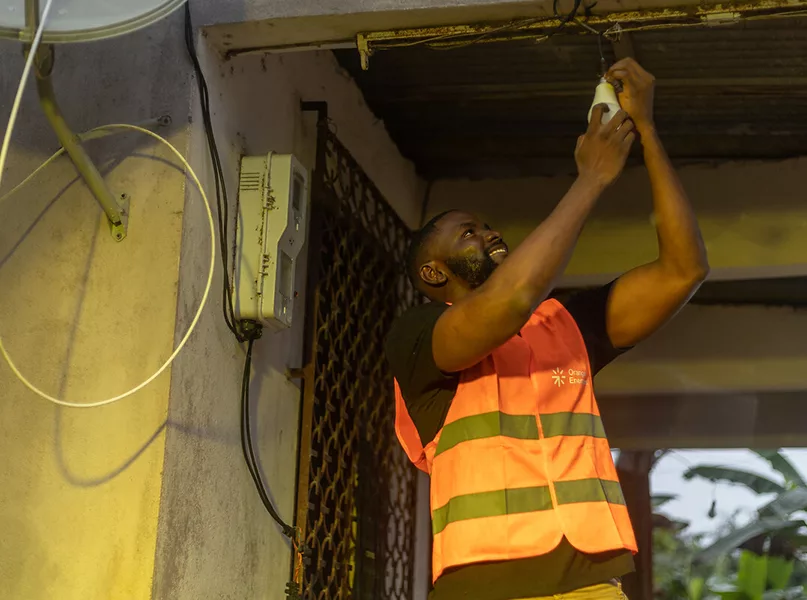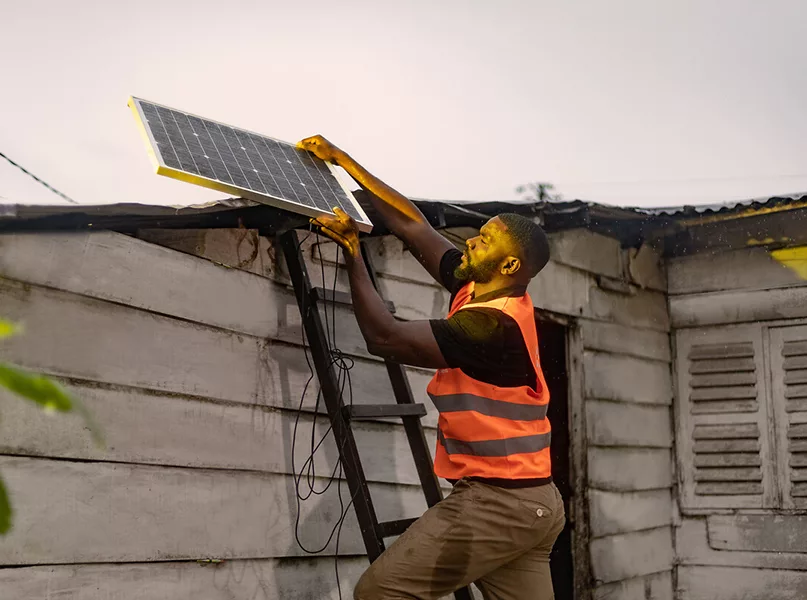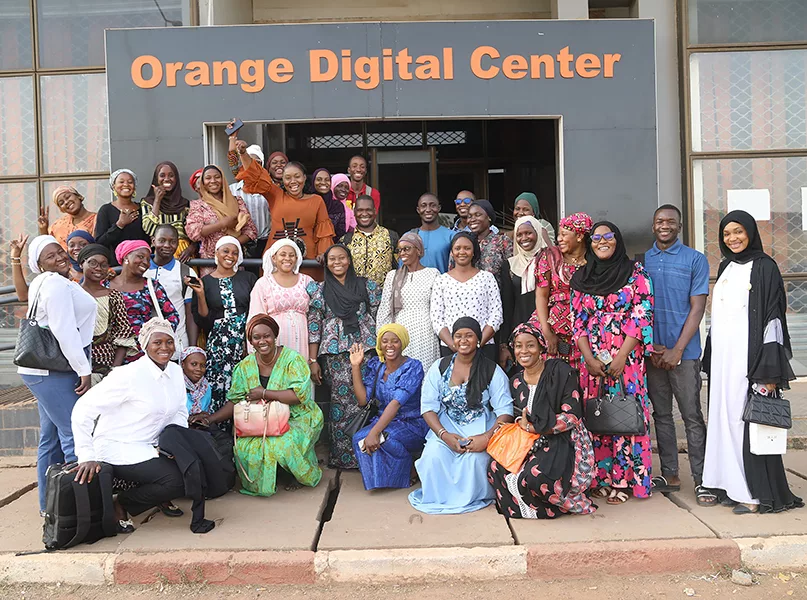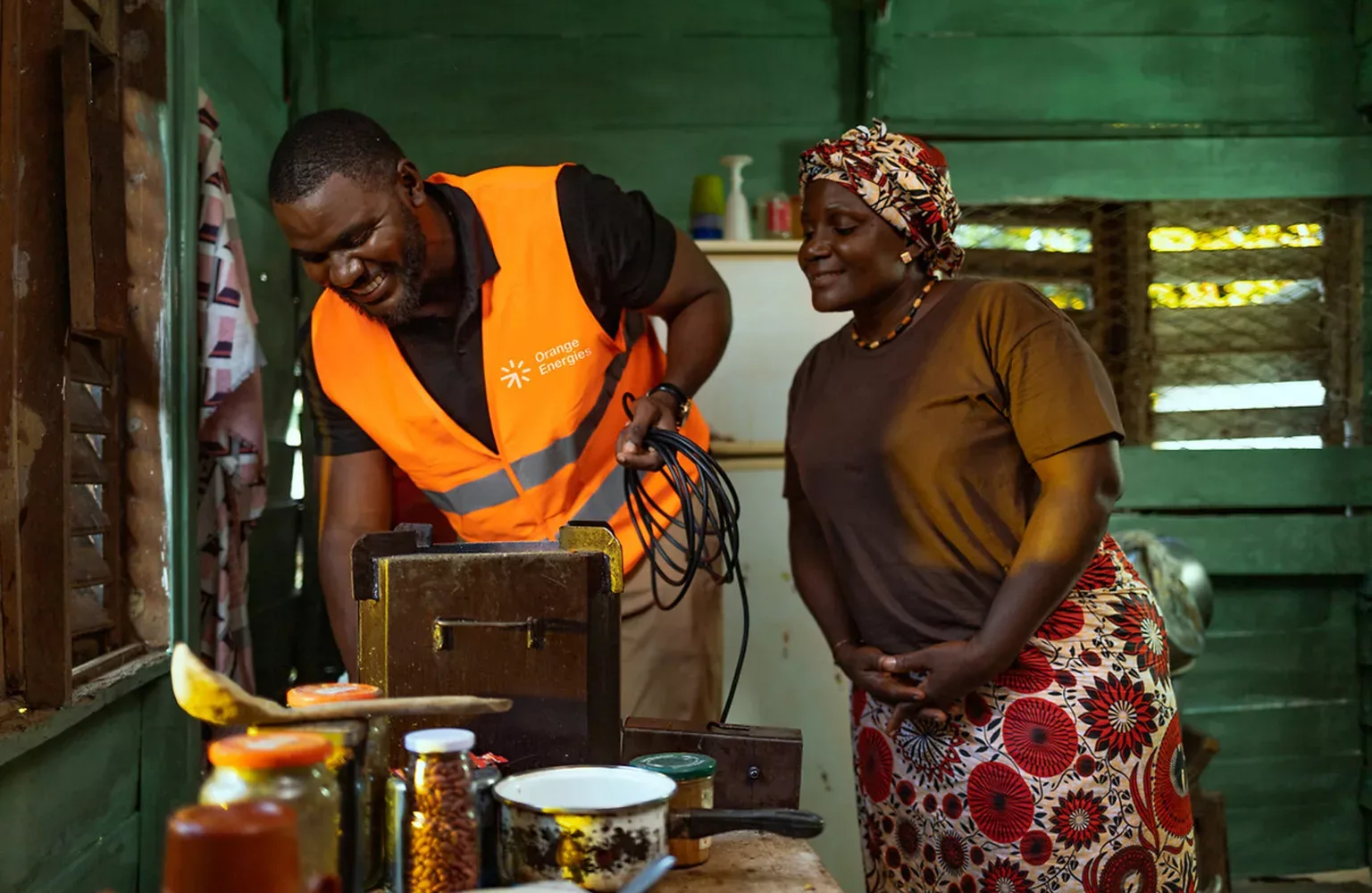We peel back the layers of Orange Middle East and Africa, whose CEO, Jérôme Hénique, reveals how the company is bridging financial and digital divides in the region.
A BRIGHT ORANGE FUTURE
The telecommunications (telecoms) sector plays a key role in fostering the digital transformation of the African continent.
Orange, one of the world’s leading telecoms operators and digital service providers, is at the forefront of this transformation.
“We can see the results of our investments in the day-to-day lives of our customers and the economic developments of the countries where we operate,” outlines Jérôme Hénique, CEO of Orange Middle East and Africa (OMEA).
“There is a direct correlation between internet penetration, for instance, and GDP growth, and we can feel that when we work in the field which is really rewarding.”
A predominantly Africa-based operation, OMEA is present in 18 countries across the continent, particularly in Western, Northern, and Central Africa, with an additional Middle Eastern location in Jordan.
Thanks to this extensive footprint, OMEA is responsible for more than half (156 million) of Orange’s 285 million total customers worldwide as of 30th June 2024.
The business is a key component of Lead the Future, Orange’s strategic plan presented in February 2023 that aims to generate value from the recognised excellence of its core business and grow sustainably in Europe, the Middle East, and Africa (EMEA).
Fostering the development of Africa and the Middle East is one of the plan’s four pillars, with the region representing 18 percent of Orange’s total group revenues, which amounted to €39.7 billion in 2023.
“We had double-digit growth of above 11 percent in 2023 and Q1 2024 and are a key contributor to the group’s overall gross profit,” Hénique notes.

GROWTH ENGINES
These impressive numbers are due to OMEA’s four regional growth engines, the first of which is the huge potential for mobile data penetration through smartphone adoptions and 4G and 5G deployments.
Fixed broadband is the second growth engine, with OMEA installing fibre alongside other technologies such as fixed wireless access across Africa.
Another of OMEA’s growth engines is business-to-business (B2B) through small and medium-sized enterprises (SMEs) and large IT projects.
Through Orange Money, meanwhile, OMEA provides mobile financial services that address the continent’s need for financial inclusion. Indeed, less than 35 percent of people in sub-Saharan Africa have access to a bank account.
Orange Money has become an essential contributor to financial inclusion as it gives customers the convenience that comes with a bank account, allowing them to access financial services.
“There are currently over 35.6 million active monthly Orange Money users and close to 100 million registered accounts,” reveals Hénique.
As part of its mobile financial services strategy, OMEA also launched Orange Bank Africa (OBA) in 2020, a fully mobile and digital bank located in Ivory Coast.
Using Orange Money, OBA provides fully digital savings and microcredit products that allow customers to borrow small amounts of money which they can use immediately to tide them over.
The bank has proven extremely popular, with more than 350,000 customers registering within the first six months, over half of which applied for a loan.
“More than 1.5 million Ivorian customers have now been able to take a loan from OBA to finance their needs, with merchants and small businesses in particular benefitting from it,” Hénique states.

VIRTUOUS MODEL
The OMEA model is considered virtuous as it bridges the continent’s gaps in financial as well as digital inclusion, reinforcing its operational and financial performance.
Digital inclusion is at the core of OMEA’s business, with huge annual investments in the deployment of both mobile and fixed networks in Africa.
“We invest more than €1 billion every year to bridge the digital divide and make sure we address population coverage with the latest broadband technologies such as 4G and 5G,” emphasises Hénique.
More than 200 start-ups have been supported by Orange Digital Centres (ODCs) and Orange Ventures has invested in more than 20 of them.
Beyond the realms of financial and digital inclusion, OMEA is launching products to deal with the key need for the African population to access clean power.
Following the success of Orange Money in offering financial services to millions of people, Orange Energies provides access to clean, reliable electricity for more than 300,000 households.
“Orange Energies is a platform to support mini grid projects as well as solar home systems and autonomous solar kits to enable people to access reliable and green energy,” Hénique explains.
OMEA evidently goes beyond the traditional role of a telco through increasing financial and digital inclusion as well as access to clean energy.
The company seeks to embed all of this in its super-app, Max it, which was launched in November 2023 to simplify the digital experience for people in Africa and the Middle East.
Max it brings together the worlds of telecoms, financial services, and e-commerce in one single smartphone interface to meet all the daily needs of its users.
More from Africa Outlook
The app has great potential in the African region, where smartphones are the gateway to everyday digital life. So far, it has been rolled out in six countries and has more than 10 million active users, which is expected to rise to around 45 million by 2025.
“We launched Max it last year to easily and directly promote all our services in one place, and will continue to roll it out in the 12 remaining countries this year,” shares Hénique.

LOCAL TALENT
As Africa has a very young population, with the majority of people being under 30 years of age, OMEA also has a part to play in training digital skills.
Through the company’s 16 ODCs, which are dedicated to delivering digital innovation and training to all, OMEA has now upskilled more than one million beneficiaries in areas such as coding, the cloud, IT, and cybersecurity.
The 18,000 African and Middle Eastern colleagues at OMEA are crucial components of the company’s success.
OMEA promotes a local anchorage model in which all of its operations are carried out in Africa, by Africans.
“We have more than 15 different nationalities in our operational headquarters that represent the best talents in our operations, so we are very proud of that,” acclaims Hénique.
This year, the company launched Engage for Change, enabling employees to take three working days to directly take part in corporate social responsibility (CSR) initiatives.
The launch has been extremely successful, with 3,000 staff members already partaking in the programme.
“It’s a way to make people proud of what Orange is doing in the field and to feel the direct impact that we have on the digital transformation of the continent and the day-to-day lives of our customers, so it’s a great initiative,” Hénique concludes.
As part of its CSR practices, OMEA also has an important role to play in Orange’s commitment to net zero by 2040, with the energy transition a core concern for the group.
Currently, 32.8 percent of OMEA’s energy comes from renewable sources, a figure it is working to improve as the company continues to enable financial and digital inclusion across the continent.





























